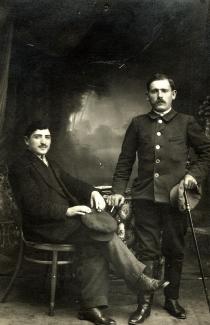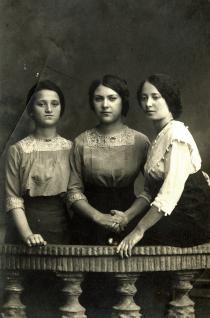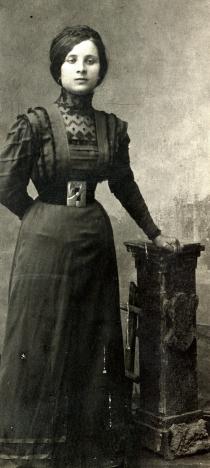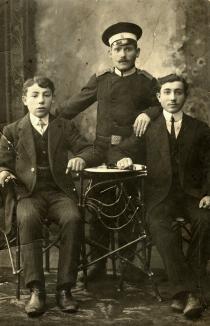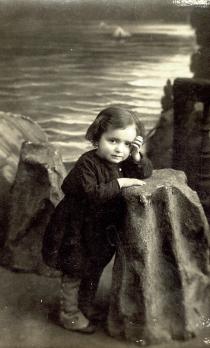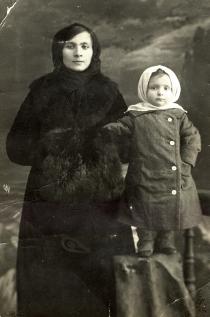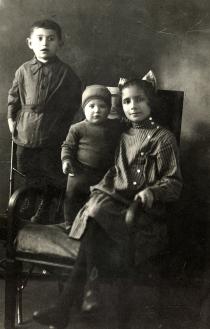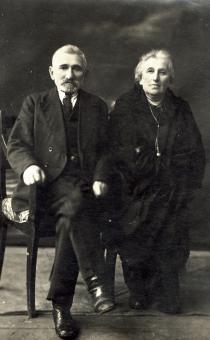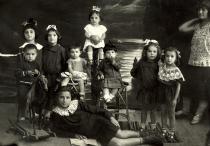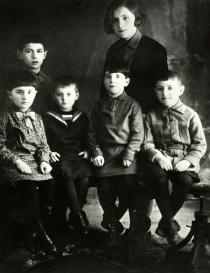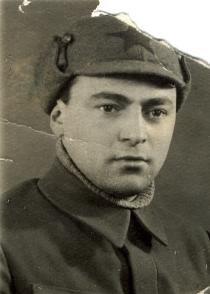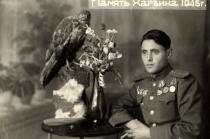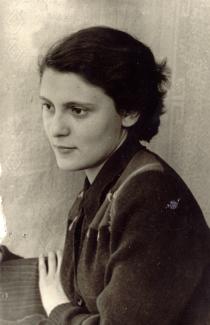My daughter Mira Veksler after entering the Kiev Road-Transport Institute. The photo was taken in 1955 in Kiev.
I gave birth to Mira in 1935. We were evacuated to Kokand with my mother and daughter at the beginning of the war [WWII] and stayed there during the whole war. My husband was in the army and he was killed somewhere in Sumy, Ukraine. As soon as Kiev was liberated, we received an invitation for the three of us that we could go to Kiev. Boris Kamenkovich, the son of my maternal aunt Rakhil, with whose family we had lived, came to Kiev at that time. We settled there and lived there until his parents came back. Then the department that I was working in gave me a room.
So, we lived with my mother and my daughter. My daughter went to school. They had a class of mixed nationalities and they never had any problems; relations between children and teachers' attitude to Jewish children were wonderful. My daughter was very good friends with our neighbor's daughter, who was Ukrainian. It was a whole Ukrainian family, but our relations were good. These neighbors were the first in our house to buy a TV set, so everybody else would go to their flat to watch it. They would often come and invite my mother too.
When my daughter finished school, she didn't really want to enter the Road-Transport Institute. But at that time it was hard for the Jews to enter universities. So, the secretary of the party organization, Korshenko, at whose house we once lived, helped us - he went to the director of the Road-Transport Institute and asked him to accept my daughter. She passed her exams with not very good marks, but she was privileged because her father had been killed in the war. So, she was admitted. Sometimes I think it would have been better for her not to have entered there.
My mother died in 1956 and my daughter in 1957. She was a very good student, she liked her studies; she finished the first year and then the second year. Everything went well and she was very happy. Then she went to the third year. After the third year she and other students went to practice. Their practice was near Odessa, where the Kiev-Odessa highway was built; it was closer to Odessa. At that time I was in a health resort outside Kiev - I just took advantage of the fact that my daughter was at the practice. A few days later, Korshenko came to pick me up by car. 'Sima Markovna, let's go to Kiev!' And he looked very energetic. I told him immediately, 'What happened to my daughter?' He said, 'Nothing serious!' I demanded, 'Tell me immediately!' I couldn't move. So, he put me in his car and took me to Kiev. On the way he told me that my daughter had been hit by a car and was now at the Institute of Neurosurgery. When I came to Odessa my daughter was no longer alive. In Odessa she was put into a coffin and the coffin was put on a truck. So, I took my only daughter, my only joy and meaning of my life, to Kiev. I buried her next to my mother, and I always think about how good it was that my mother had not lived to see the death of her granddaughter. I was left alone. I never married again. I devoted all my life to work and fellowship with a few friends.

